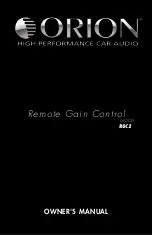
Module Operation and Features — Section 4
Module Connectors and Functions
If you look at the Tri
Mark
IO module with the label pointed up, the
numbering system is bottom right to top left (opposite of how you read).
(see diagram below)
For all inputs:
(-) indicates that the inputs normally floats (no predetermined
voltage to input) unless a ground signal is placed to activate pin.
(+) indicates that the inputs normally floats (no predetermined
voltage to input) unless a 12V signal is placed to activate pin.
(+/-) indicates that the inputs normally floats (no predetermined
voltage to input) the voltage is the opposite of CJ2 to activate
(selectable).
For all outputs:
(-) upon activation a 500mA ground path will be activated.
(Relay 20A) a momentary path that is normally ground will be
vehicle power (lock unlock doors, extra).
Note:
Most fuses are based on wire gauges. Fuses should be gauged
accordingly.
For all Signals:
Follow CAN/RV-C protocol (see acronyms)
For all Antennas:
An AC signal (for communications)
13
14
Summary of Contents for 500-1300 e-ASK
Page 15: ...Connector Locations 15...
Page 20: ...Appendix A Wiring Diagrams 20...
Page 21: ...21...
Page 22: ...22...
Page 25: ...IO module LF Antenna 36159 01 25...
Page 34: ...Notes 34...
Page 35: ...Notes 35...















































